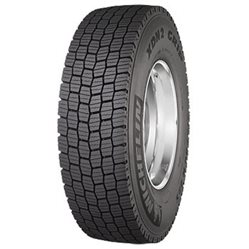Preparing for winter starts with a maintenance policy. Fleets and drivers should always have a well-written maintenance policy in place. This policy should be specific to their vehicles, equipment, geography, distance they travel, loads they carry, time on the road and other pertinent facts. Conditions for winter travel can obviously be more challenging and safety is the top priority. In general, drivers should follow this checklist prior to any trip:
- Maintain proper tire pressure
- Monitor tread depths
- Watch for irregular wear
- Inspect suspension components
A pre-trip inspection is not only important to improving safety, it is also critical to ensuring the most efficient performance from the trucks. The advantages of a pre-trip inspection include improved highway safety, reduced downtime, increased productivity and better on-time load delivery.
Cold weather tire pressure requirements. Tire pressure monitoring is a key component of a complete tire maintenance program. The number of tire related issues and roadside events will be significantly reduced by maintaining proper tire pressure. This ultimately results in less downtime on the side of the road.
With the onset of cold weather, tire pressures will drop. It is imperative to set the tire pressure prior to operating the vehicle at the onset of the trip while the tires are at ambient temperature. The ideal time to check tire pressures is during the pre-trip inspection prior to departure. Driving, even for a short distance, causes tires to heat up and pressure to increase.
Drivers should always use a properly calibrated gauge when verifying the pressure of a tire and should not rely on the aspect of the tire. If the tire is 20% below the recommended pressure, it must be considered flat. It should then be removed and inspected for punctures or other damage. Failure to do so may lead to unwanted downtime.
Winter treads. Fleets and owner-operators know their specific operating and delivery conditions. If the fleet is located or operates in conditions which are likely to experience winter conditions (such as the Northeast, northern Plains, upper Midwest, Pacific mountains or Canada) they may want to consider a specific tire tread or a retread for those conditions.
 |
| MICHELIN XDN 2 tir |
Michelin offers specific products for these conditions. The MICHELIN XDN 2 tire and the pre-mold retread, all-weather, non-directional, drive selection are optimized for exceptional traction on slippery surfaces. The MICHELIN XDS 2 tire and pre-mold retread are designed for year-round drive axle
traction optimized for challenging winter conditions.
Inappropriate tires in winter weather applications. If during the tire inspections the driver starts to notice circumferential cutting, chunking, spin damage or tearing, these could be signs the tires are experiencing low traction conditions. The fleet operator needs to have a dialogue with the driver about the specific conditions that he is experiencing. The fleet operator should work with the dealer to discuss the appropriate tire selections for their operations.
The use of tire chains in severe winter weather conditions. Tire chains are often necessary in certain regions and with challenging winter conditions. Chains are often required as determined by local law enforcement. Operators should also make sure to follow the chain manufacturers’ instructions for properly mounting the chains with the correct type and size to ensure safe operations. They should also refer to the tire manufacturers’ service manual for recommended directions for both speed and duration of use.
For new drivers and drivers new to a fleet, it may be beneficial for the driver to be trained on the equipment specific to the vehicle and be sure the equipment is correct for the season. This can be done in the yard when the weather conditions are fair, well before they are experiencing the challenging conditions with the weather elements. The end goal is for the driver to be comfortable with the process.